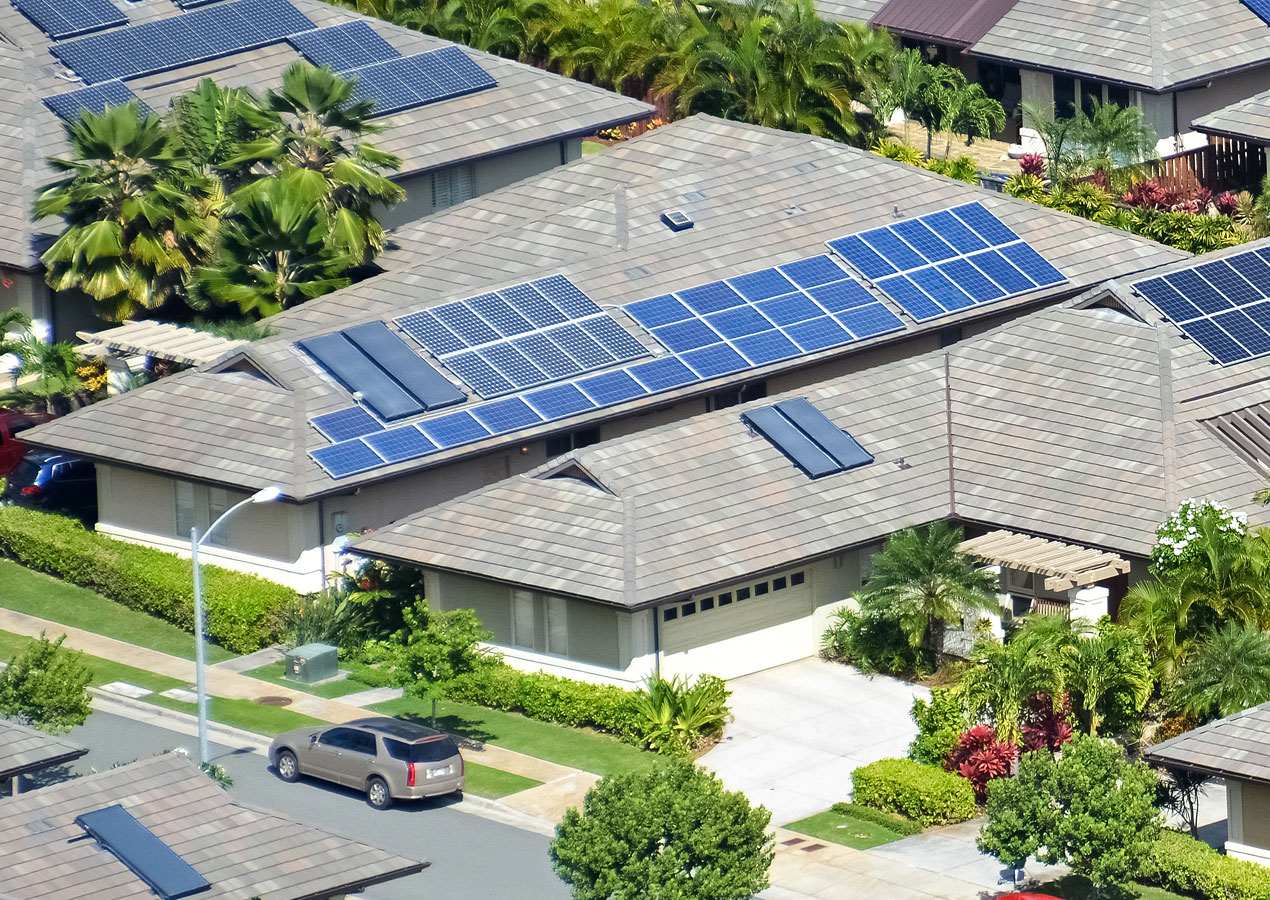
02 Jul Your Guide to Solar Water Heaters in Hawaii
There’s no doubt about it, solar power and thermal technology are the way of the future. Not only is it a greener alternative for sourcing your energy, but it’s a more cost effective way to heat your water. And if you’re a Hawaii homeowner, going solar is a great way to utilize all of the sunshine we receive all year round thanks to the island’s clear tropical skies. With the production of hot water accounting for—on average—17 percent of a home’s total energy use, according to the Department of Energy, you can save big bucks on your water heating bills month-to-month by making the switch to solar.
Of course, there are pros and cons to switching to a solar water heating system compared to your average run-of-the-mill electric process, ones that we’ll go over in this article. But first, let’s talk about what exactly makes up a solar water heating system.
What Is a Solar Water Heater
To put it simply, a solar water heater’s job is to expose water to the heat of the sun—via the sun’s rays—and circulate the warmed liquid back through your home for everyday use. And thus, there are two main components to the process, a tank to hold your water and a device to gather the sun’s warmth to heat your water. And here’s where we branch off. There are two types of solar water heaters, passive and active units, with the primary difference being that passive systems utilize gravity to move its water while active units require pumps.
Active or Passive Unit?
So why would you choose an active system over a passive one? For the most part, an active solar water heater is more expensive but also happens to be more efficient in use, and an “active indirect” system is better suited for colder climes where pipes run the risk of freezing, as it circulates a non-freezing fluid through its pipes via pumps. Passive units are less expensive and simpler, but also are less efficient compared to their active counterparts. With less moving parts, they do tend to be more reliable over time and easier to repair when the time comes.
Three Basic Designs
There are three basic designs when it comes to heat collecting devices. Batch collectors heat up water in tubes or pipes and are best suited for warm climes—like Hawaii—as they are tasked with heating a larger quantity of water. Flat-plate collectors utilize metal plates which are painted black to draw more of the sun’s heat. This energy then travels from the metal to tubes filled with water, which are then heated and travel to a storage tank which in turn keeps the stored water hot. Finally, evacuated heating tube collectors are what some would consider to be the most optimal way to heat your water. Water is stored in a tube surrounded by another, larger tube—this one being a vacuum sealed glass tube—and is heated by the sun. This method ensures that the water is heated effectively with a minimal loss of heat, since there’s no air around the heating water and the outside world.
Pros & Cons
The most immediate and gratifying “pro” to switching to a solar heating system in Hawaii is a fifty to eighty percent decrease in your total water heating bill. Not only that, but by going solar you open yourself up to tax credits and instant rebates from Hawaii Energy. You’ll also be a part of the clean energy movement by heating your water through solar and not electricity. And if you want to consider selling your Hawaii property in the future, having a solar water heating system already in place is a great way to increase your overall property value.
Initial Investment
Of course, going solar can be a big initial investment, especially for those on a tight budget. The cost of parts depends on the size of your household and how much water you need on tap. Labor can cost you anywhere from $4,000 to $6,000. The efficiency of your heat collecting panels can also be dependent on their placement and whether or not you have trees or shrubbery blocking sunlight from your roof.
Maintenance
Like any other piece of plumbing in your home, a solar water heating system will need routine maintenance. 535 Plumbing recommends having your solar water heater tuned up every five years to ensure you’re getting peak efficiency from your system. And if your system is 15 years or older, has leaks or is not working properly, you can replace the entire network and take advantage of federal and state tax credits and an instant rebate from Hawaii Energy for the work.
535 Plumbing – Your Solar Water Heating Experts
If you live on Oahu and are in need of a plumber, choose 535 Plumbing for the job! Our team of professional Oahu plumbers are highly skilled and our excellent customer support representatives will work with you to schedule your appointments at a time you most convenient. Learn more and schedule an appointment by calling (808) 300-0535, or Visit Our Contact Us Page. Mahalo!


